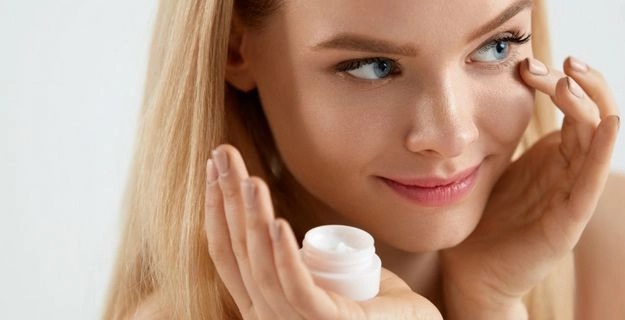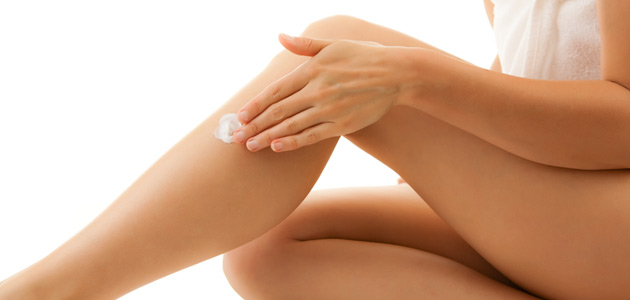What’s the secret to achieving your best skin ever? It isn’t one product, one treatment, or one routine. It’s a combination of consistency, understanding your skin’s specific needs, and sometimes ignoring trends in favor of what actually works for you. While social media may push you toward 10-step routines and viral sheet masks, it’s crucial to remember that your skin is unique—and chasing someone else’s glow isn’t always the answer.
To help you figure out your own path to flawless skin, we’ve gathered insights from beauty icons, skin-care professionals, and celebrities with enviable complexions. While it’s not necessary to follow every one of these tips, picking up even a few can bring noticeable improvement. If nothing else, this might be your reminder to take off your makeup before bed, drink more water, and stop skipping the basics.
1. Listen to the Professionals
The most reliable skincare wisdom often comes from those who’ve studied it for years—or built their careers around it. Take Alina Roytberg, co-founder of the skin-care brand Fresh, whose routine is fast and practical. Or Emily Weiss of Glossier, who advocates for minimalist, skin-first beauty that doesn’t rely on makeup to fake a glow. Beyoncé’s dermatologist suggests daily exfoliation—not with abrasive scrubs, but with gentle cleansers that cleanse deeply without damaging your skin barrier. And if you’re curious about models like Alexander Wang’s skincare routine, his facialist is a big fan of both face yoga and a detailed multi-step regimen that prioritizes skin hydration and facial muscle tone.
These pros all offer one unifying truth: good skin starts with listening to what your face actually needs.
2. Moisturize, Moisturize, Moisturize
Moisturizing may seem like the most obvious skincare step, but it’s also the most misunderstood. People often assume moisturizers themselves provide hydration, but that’s only half true. Moisturizers are designed to seal in existing moisture, not create it from scratch. That’s why applying them immediately after a shower—when your skin is still slightly damp—is far more effective than waiting until it’s bone dry.
Whether you favor rich creams, water-based gels, or nourishing oils, the act of moisturizing is non-negotiable. Celebrities from John Cena to Helen Mirren all stress the importance of regular hydration. And no matter your age or skin type, skipping this step often results in dullness, rough texture, and increased sensitivity.
3. Use Retinoids
In the vast landscape of skincare ingredients, retinoids hold a special place. These vitamin A derivatives are backed by decades of research and loved by dermatologists for their ability to tackle a wide range of skin concerns. From smoothing out fine lines and wrinkles to minimizing acne, fading dark spots, and refining texture—retinoids are as close as it gets to a true all-in-one solution.
There are multiple forms to consider, including over-the-counter retinols and retinaldehydes, or stronger prescription options. To figure out what works best for your skin, especially if it’s sensitive or acne-prone, a consultation with a dermatologist can go a long way. Most importantly, give your skin time to adjust, and don’t forget to pair your retinoid use with daily sunscreen—these products can increase sun sensitivity.
4. Apply Products Correctly
You could spend hundreds of dollars on luxury serums and still not see results if you’re applying them incorrectly. Technique matters. Rubbing your face with a cleanser for 10 seconds and rinsing with cold water might feel refreshing, but it’s likely not doing much beyond removing surface dirt.
Instead, take your time—use gentle upward motions when applying serums, moisturizers, or oils. Start with the thinnest product in your routine and layer up toward thicker formulations. For example, apply water-based serums before creams, and always allow time for each product to absorb. Proper layering improves absorption and ensures active ingredients actually have a chance to work.
5. Not Just on Your Face
When thinking about skincare, people tend to stop at the chin—but the truth is, great skin doesn’t end at your jawline. The neck, chest, and even your hands can benefit from the same attention you give your face. Nora Ephron famously warned women to pay attention to their necks—this area tends to show signs of aging quickly and often needs more moisture than we realize.
Using your facial creams on the neck and décolletage can keep the skin supple and youthful. As for hands, applying a good-quality hand cream and then slipping on a pair of gloves overnight can deeply condition both your nails and cuticles. Little rituals like these help maintain an overall glow—not just a photogenic face.
6. Know Pillows Can Be the Enemy
At the end of a long day, collapsing into a soft bed is the ultimate reward. But your pillowcase—depending on its material and cleanliness—might be silently sabotaging your skin. If you’re experiencing unexplained breakouts, dryness, or irritation, your pillow could be part of the problem.
Cotton pillowcases, especially when not washed frequently, can harbor oils, dirt, and bacteria. These get transferred to your face as you sleep, potentially clogging pores and triggering acne. Also, the friction caused by coarse fabrics can create irritation or worsen conditions like eczema.
Switching to a silk or satin pillowcase can make a noticeable difference. These materials are gentle on the skin, don’t absorb as much moisture, and allow your face to glide smoothly—reducing creases and minimizing irritation. And regardless of fabric, aim to change pillowcases at least once a week.
7. Master Masks
Masks aren’t just hype—they serve a purpose when used properly. Unlike your daily cleanser or toner, masks are designed to remain on the skin longer, allowing ingredients to penetrate more deeply and target specific concerns. Whether it’s hydration, detox, brightening, or tightening, there’s a mask for that.
Mud masks are excellent for drawing out impurities and excess oil. Sheet masks deliver a concentrated dose of hydration or serums, depending on their ingredients. Magnetic masks add a novel touch but also incorporate detoxing minerals. Even smoothie-textured masks made with fruit enzymes or yogurt offer gentle exfoliation.
Apply your mask to freshly cleansed skin and give it the full time to work. Don’t rush to rinse it off the moment it starts drying—timing is everything. And while it’s tempting to mask daily, 1–3 times a week is usually sufficient for most skin types.
8. Soothe Dry Skin
Dry skin isn’t just uncomfortable—it can create rough texture, flakiness, and sensitivity. And ironically, many people misdiagnose their skin type, thinking they’re oily when they’re actually dehydrated. If your skin feels tight, looks dull, or shows signs of peeling, you’re probably dealing with a moisture deficit.
Focus on products that lock in hydration rather than just sit on the surface. Oils like jojoba or marula can replenish lost lipids. Gel-based moisturizers, particularly those containing glycerin or hyaluronic acid, offer long-lasting hydration without heaviness. Exfoliating twice a week with a gentle, non-abrasive exfoliant can also remove the top layer of dead skin, allowing moisturizers to absorb better.
Avoid over-washing, and resist the urge to use harsh foaming cleansers—they often strip away the skin’s natural barrier. Instead, opt for gentle, pH-balanced options that cleanse without drying.
9. Banish Acne Before a Big Event
Everyone wants clear, glowing skin on a big day—but stress, diet, or hormones often have other plans. Whether you’re preparing for a wedding, a photo shoot, or an important date, last-minute breakouts are a common hurdle.
Start by double cleansing—a method where you begin with an oil-based cleanser to remove makeup and SPF, followed by a water-based cleanser to clean your pores. This helps eliminate buildup without stripping your skin. Incorporate acne-fighting ingredients like salicylic acid or benzoyl peroxide early, so your skin has time to adjust.
Look for non-comedogenic moisturizers to keep your barrier intact, and avoid new products in the week leading up to your event to prevent unexpected reactions. And if a pimple does appear, resist the urge to pop it—spot treatments with sulfur or tea tree oil can work faster with less risk of scarring.
10. Embrace Acids
If the word “acid” sends alarm bells ringing, you’re not alone—but not all acids are scary. In skincare, acids are among the most effective ingredients for resurfacing, clarifying, and brightening the skin. Used correctly, they can deliver smoother, clearer, and more radiant results without any horror movie outcomes.
Start with milder acids like glycolic acid, lactic acid, or mandelic acid, which gently exfoliate and improve skin tone over time. If acne is a concern, salicylic acid is a go-to for decongesting pores. For those targeting hyperpigmentation or dullness, azelaic acid offers anti-inflammatory benefits and helps even out skin tone.
The key is moderation. Use them only as directed—usually once or twice per week when starting—and always follow up with sunscreen. Never attempt a DIY acid peel at home. Professional chemical peels exist for a reason, and trying to replicate them with at-home mixtures can cause burns or long-term damage.

11. Matte It Down
Oily skin is often misunderstood. On one hand, it’s associated with breakouts and shine. On the other, it’s a built-in anti-aging advantage—oily skin tends to wrinkle more slowly due to its natural moisture levels. Still, managing oil production is key to maintaining a fresh and balanced complexion.
Rather than trying to strip your skin dry—which can backfire and cause even more oil production—focus on products that balance. Use a jelly cleanser to gently cleanse without over-drying. Apply a lightweight, oil-free moisturizer that hydrates without adding grease. And don’t skip sunscreen—opt for a matte finish version that doubles as a primer.
Frequent blotting may be necessary, but instead of reaching for anything you can find (like tissue or even toilet-seat covers, as some people have done), keep a stash of blotting papers on hand. A translucent setting powder or mineral-based finishing spray can also help you control shine throughout the day.
12. Tough It Out
Not all skincare treatments are relaxing—some can be downright painful. Just ask anyone who’s had a deep extraction facial or tried V-line sculpting techniques. The intensity might leave you with watery eyes or flushed cheeks, but the aftermath can be a significant improvement in skin tone, texture, and firmness.
Fashion insiders like Diana Tsui and beauty editors like Kathleen Hou have admitted to shedding a few tears during certain facials. Yet they also swear by the post-treatment glow and sculpted results. These high-impact facials often involve lymphatic drainage, manual contouring, and product layering—all designed to improve circulation and lift facial muscles.
If you’re not ready for the pain, you can always request gentler treatments—or opt for DIY alternatives that offer milder but still visible benefits. The key is knowing your limits and communicating with your esthetician about your skin’s sensitivity.
13. Then Sweat It Out
Sweating may not sound glamorous, but it can be one of the most effective ways to rejuvenate your skin. Karrueche Tran attributes her glow to a regular routine of hot yoga, facial steaming, and sauna sessions. These practices open up the pores, flush out toxins, and improve blood circulation—all of which contribute to a clearer, more vibrant complexion.
Using a facial steamer at home is a great way to replicate the benefits of spa treatments without the cost. Always cleanse your skin first, then steam for 5–10 minutes. Follow up with a detoxifying mask or serum to maximize absorption. Don’t forget to rehydrate afterward with a moisturizer or hydrating mist.
While sweating helps with detoxification, make sure to shower or cleanse your face afterward to avoid buildup of sweat, salt, and bacteria which can lead to breakouts.
14. Massage It
Facial massage isn't just relaxing—it’s transformative. Whether done by a professional or at home, regular facial massage can help improve lymphatic drainage, reduce puffiness, lift sagging skin, and stimulate collagen production.
Editor-in-chief Stella Bugbee described her first high-end facial massage as “Botox without the needles.” While professional services can be pricey, DIY methods using your fingers or a jade roller can deliver similar benefits with consistent practice.
One effective technique is the French facial massage, which focuses on upward and outward movements using firm but gentle pressure. Even five minutes a day can make a visible difference. There are plenty of free tutorials available if you're unsure where to start, and the process often doubles as a form of meditation or self-care.
15. Respect the Sun
No matter how perfect your skincare routine is, ignoring sun protection can undo all your hard work. Sun damage not only accelerates aging—it can cause lasting harm like sunspots, broken capillaries, and in worst cases, skin cancer.
Model and actress Christie Brinkley, once known for her love of tanning, eventually reversed her approach and now champions sun protection as her most important skincare habit. She’s far from alone—dermatologists around the world emphasize the importance of daily SPF use, even on cloudy days or indoors.
Look for a broad-spectrum sunscreen with SPF 30 or higher, and reapply throughout the day if you’re outside. Powder-based sunscreens and setting sprays with SPF are great options for touch-ups over makeup. And don’t forget areas like your ears, neck, and hands—sun damage isn’t picky about where it strikes.
16. Know That Skin Care is Self-Care
Skin health isn’t just about serums and exfoliants—it’s also deeply connected to your emotional well-being. Studies have shown that high levels of stress can worsen conditions like acne, eczema, and psoriasis. In contrast, taking time to care for your skin can promote relaxation, mindfulness, and self-esteem.
Actress Gabrielle Union is often asked for her skincare secrets, and while good genetics certainly play a part, she attributes much of her glow to inner peace. Her approach? Saying “no” more often and investing time into things that bring her joy.
Nourishing your skin includes what you put into your body as well. Fermented foods rich in probiotics—like yogurt, kefir, and kimchi—may help support the gut-skin connection. A balanced diet, adequate sleep, and regular movement all contribute to that healthy glow.














